PLANS receives a portion of the profit when you buy books through this page.
Fiction
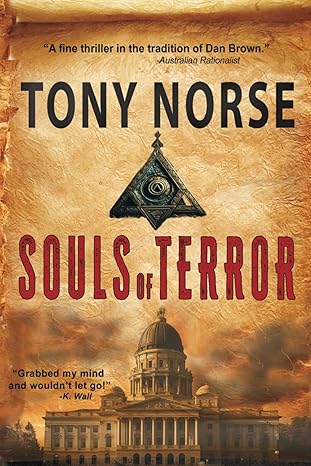
SOULS OF TERROR is a fast-paced, well-researched thriller with fascinating characters whose lives become strangely entwined as they unravel a frightening mystery. The surprising climax will leave you forever questioning the thin line between fact and fiction. In the beginning . . . A brilliant university student is brutally killed in New York as a young boy from an Oregon private school is whisked off to Switzerland. What is the connection and why is it so important to millions of people? Chris Thompson is ridden with guilt while searching for his son. Is young Michael the key to a deeply spiritual and terrifying mission? Michael’s attractive aunt Kate has a penchant for profanity and martial arts . . . and carries a heavy secret from her past. Dr. Paul Sung is an atheist and authority on the history of the New Age movement. His unfulfilling life in academia is about to change. Detective Mark Julian needs to solve a string of gruesome New York murders, so why was he sent to Europe? Karl Heisman and his Group of Forty-Eight are a covert sub-group of a spiritual movement known as Anthroposophy. Does their strange karma include links to Freemasonry and the dawning of a New Age? Are they racist terrorists or is there a method to their madness? And who was Rudolf Steiner?

The Kingdom of Childhood is the story of a boy and a woman: sixteen-year-old Zach Patterson, uprooted and struggling to reconcile his knowledge of his mother’s extramarital affair, and Judy McFarland, a Waldorf kindergarten teacher watching her family unravel before her eyes. Thrown together to organize a fundraiser for their failing private school and bonded by loneliness, they begin an affair that at first thrills, then corrupts each of them. Judy sees in Zach the elements of a young man she loved as a child, but what Zach does not realize is that their relationship is—for Judy—only the latest in a lifetime of disturbing secrets.
Critical Works
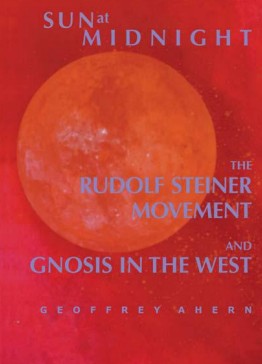
A revised and updated edition of the book, first published in the Eighties, that still remains the main critical work written from outside the movement. This engaging introduction to Anthroposophy is written from the unique point of view of the English-speaking outside world. Employing Anthroposophical and external sources alike, Ahern offers an unbiased look into one of the world’s most interesting mystical societies. Sun at Midnight guides the reader through Anthroposophy’s beginnings as an offshoot of Theosophy, the life of its founder, Rudolph Steiner, and the movement’s place in Western esoteric history while offering an accessible and incisive look into its deeper esoteric beliefs. Waldorf schools and bio-dynamics are woven together with the hardening of spirit into matter to create a fascinating image of Anthroposophy in all its facets.
“Ahern’s book is a general overview of the Steiner movement. He examines Steiner’s life, his cosmology and the influences that led to his supposedly Christian version of Gnosticism. Ahern also looks at Steiner spin-offs such as Biodynamic agriculture, Waldorf (Steiner) education, Camphill Homes and “Christian Community” churches, showing how they are all based on Steiner’s beliefs.” Creation Research Society Quarterly, Winter 2011
“Geoffrey Ahern’s ‘Sun at Midnight’ is a balanced and professional look at Rudolf Steiner and his cult ‘Anthroposophy.’ Among the thousands of books about Waldorf education and Anthroposophy, this is one of a very few written with an objective viewpoint from outside of the cult…Laced within Ahern’s comprehensive approach to this difficult subject are astute observations and wry comments such as ‘Anthroposophical science is not about applying “Occam’s razor”‘ in reference to Steiner’s elaborate pseudoscience…Anyone considering enrolling their child ina Waldorf School would do well to read Ahern’s book first, especially given the well-known lack of transparency of the Waldorf schools.” Dan Dugan, Secretary of PLANS, Inc., September 2011
“Ahern’s book is extremely informative – indeed, it is fascinating…SUN AT MIDNIGHT is inviting and accessible…nearly indispensable reading for anyone who wants a balanced, informative, and sensible…examination of Rudolf Steiner and his brainchildren.” Roger Rawlings
Hitler – Steiner – Schrebe 🇩🇪
by Wolfgang Treher

Gaeste aus einer anderen Welt (Guests from another world) Die seelischen Strukturen des schizophrenen Prophetenwahns (The psychological structures of schizophrenic prophetic delusion).
The book Hitler, Steiner, Schreber: Gäste aus einer anderen Welt by Wolfgang Treher examines the psychological and spiritual dimensions of Adolf Hitler, Rudolf Steiner, and Daniel Paul Schreber. It explores the idea that all three figures exhibit elements of “schizophrenic prophetic madness” and delves into the mental and ideological structures that connect their thoughts and actions. The book aims to link their worldviews with broader implications for understanding extremist or mystical thinking, particularly through the lens of psychiatry and philosophy.
Between Occultism and Nazism: Anthroposophy and the Politics of Race in the Fascist Era
by Peter Staudenmaier
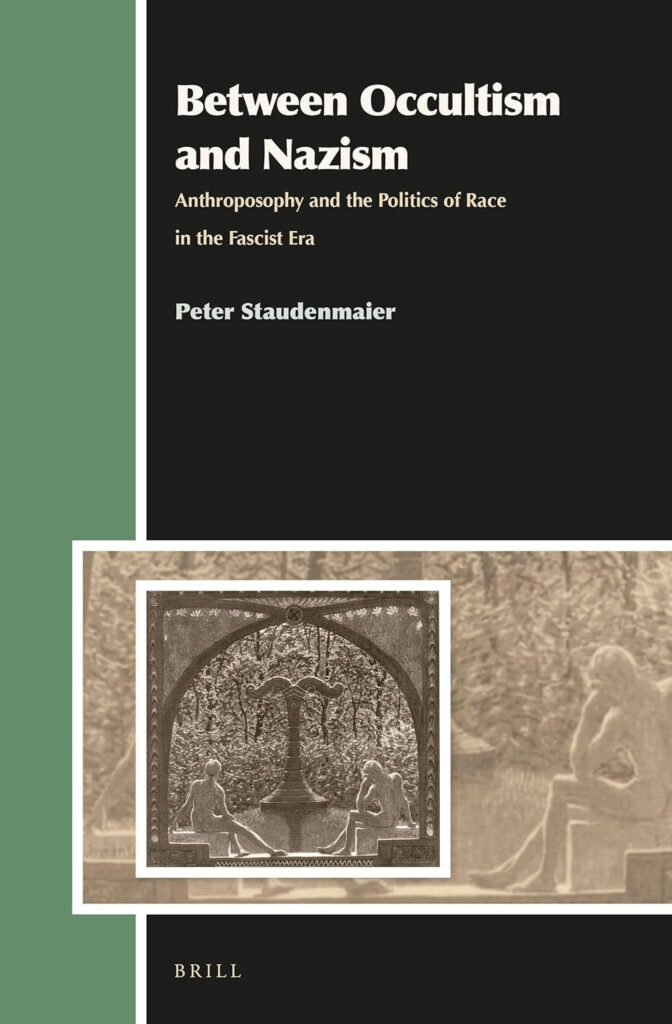
The relationship between Nazism and occultism has been an object of fascination and speculation for decades. Peter Staudenmaier’s Between Occultism and Nazism provides a detailed historical examination centered on the anthroposophist movement founded by Rudolf Steiner. Its surprising findings reveal a remarkable level of Nazi support for Waldorf schools, biodynamic farming, and other anthroposophist initiatives, even as Nazi officials attempted to suppress occult tendencies. The book also includes an analysis of anthroposophist involvement in the racial policies of Fascist Italy. Based on extensive archival research, this study offers rich material on controversial questions about the nature of esoteric spirituality and alternative cultural ideals and their political resonance.
Heiner Ulrich, Rudolf Steiner 🇩🇪
by C.H. Beck
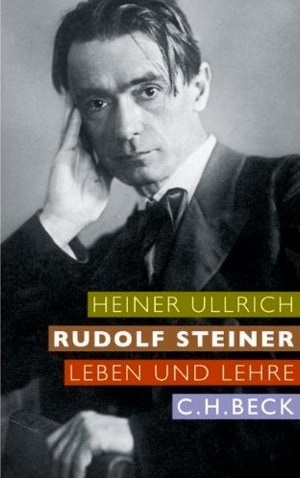
Heiner Ullrich, Rudolf Steiner (London: Continuum, 2008). Ullrich is a major figure in German educational studies and an expert on the history of pedagogical reform movements. He has published many works on Steiner, anthroposophy, and Waldorf schools, including some of the best critical studies of Waldorf pedagogy available. Most of his work is in German, but the 2008 book provides a good overview of his research, and it is mostly focused on Waldorf education. Though I have various disagreements with Ullrich’s arguments, I recommend the book highly to everybody looking for perceptive scholarship on Waldorf schooling and anthroposophy. [-P.S.]
Madame Blavatsky’s Baboon: A History of the Mystics, Mediums, and Misfits Who Brought Spiritualism to America
by Peter Washington

The New Age is not so new. Peter Washington traces it back to ideas that entered our cultural bloodstream just before the dawn of the twentieth century, when a mysterious renegade Russian aristocrat named Madame Blavatsky appeared in America. Darwin was wrong, she claimed. Man was not descended from apes but from spirit beings. As a reminder, she kept a stuffed baboon in her parlor dressed in wing collar, tail-coat, and spectacles, and holding a copy of The Origin of Species in its hand.
Theosophy, the movement Madame Blavatsky founded, spawned competing gurus and sects which in the course of the century evolved into the New Age. Here is the incredible story of Rudolf Steiner and his breakaway anthroposophy, of the tyrannical and mysterious Gurdjieff with his Path, of Ouspensky, the rebel Gurdjieffian, and of Krishnamurti — a future “world leader” spotted in India as a boy by the pederast and grand panjandrum of Theosophy, Bishop (self-appointed, of his own church!) C. W. Ledbetter.
These gurus and the alternative religions they founded had a powerful appeal particularly for women, who found in them a role denied them by conventional religions. They also attracted some of the most influential intellects of the age — Oscar Wilde, W. B. Yeats, George Bernard Shaw, Frank Lloyd Wright, Katherine Mansfield, Aldous Huxley, and Christopher Isherwood — all searching for an alternative to Western materialism and notions of spirituality. Needless to say, these movements also attracted a host of colorful adventurers, uncertified lunatics, wealthy and lonely spinsters, charlatans, and lost souls.
Well-researched, thought-provoking, and often hilarious, Madame Blavatsky’s Baboon provides a fascinating and helpful perspective on the hopes and fears of our own day as well as those of a century ago.
Peter lives in London, where he is the general editor of Everyman’s Library. Author of a number of books of intellectual history, he is a professor of English and European Literature at Middlesex University and a reviewer and critic for The London Evening Standard and The Independent.
The Waldorf Movement in Education from European Cradle to American Crucible, 1919-2008
by Ida Oberman

The most valuable part of this book is oberman’s study of the history of the Waldorf schools in Germany during the Nazi period. This hundred- page section comprises a quarter of the book. It’s ironic that Douglas Sloane’s foreword repeats some of the same myths that oberman refutes in the book itself. Her interviews with several eyewitnesses add previously unknown details. She acknowledges that the history published by the Waldorf movement is “hard to substantiate.” The different ways several schools dealt with National Socialist pressure are detailed. Berlin and Hamburg-Altona closed rather than compromise. Stuttgart made every attempt to compromise. Dresden and Hanover embraced National Socialism. On the issue of whether Jewish teachers were fired or, as Waldorf spokesperson Detlef Hardorp argued on waldorf-critics in March, 2008, left voluntarily to save the schools, oberman says they were “dismissed.” [-P.S.]
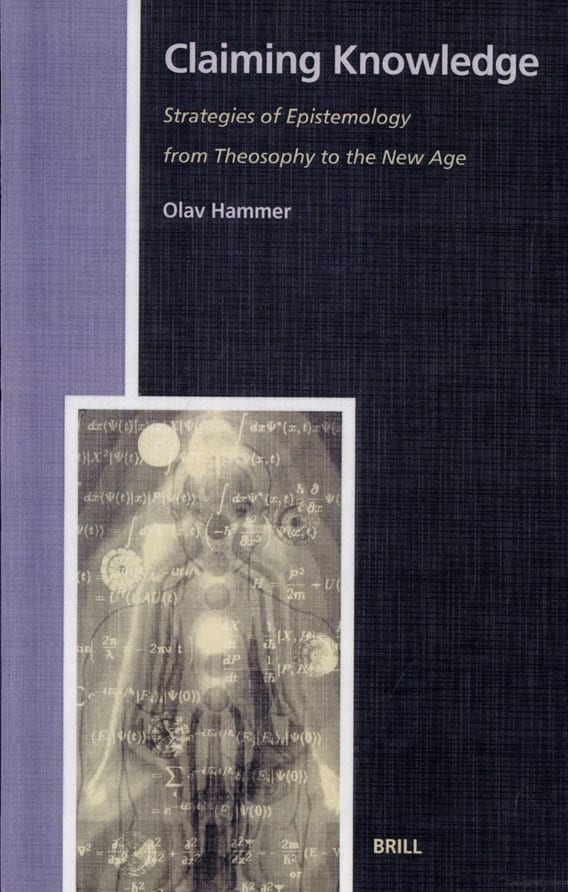
This academic study examines the core issue of conflict between Steiner’s Anthroposophy and the real world. Epistemology is the study of knowledge; how is reliable knowledge obtained? Hammer holds Anthroposophy’s feet to the fire of modern philosophy.
“Since the central movement texts of anthroposophy are the writings of Rudolf Steiner, his views are authoritative. Nevertheless, both Steiner and his exegetes have emphasized that it is entirely feasible for others to reach the same results and verify his statements. …anthroposophical literature presents detailed methods of obtaining the requisite spiritual experience. However, there are, in fact, two counteracting strategies at work. First, no follower of Steiner has ever been deemed by the various local anthroposophical societies to have attained the same mastery of the methods of spiritual exploration. Secondly, specific elements in the path towards a knowledge of the ‘higher worlds’ are expressly aimed at making experience conform to dogma” [p. 340]
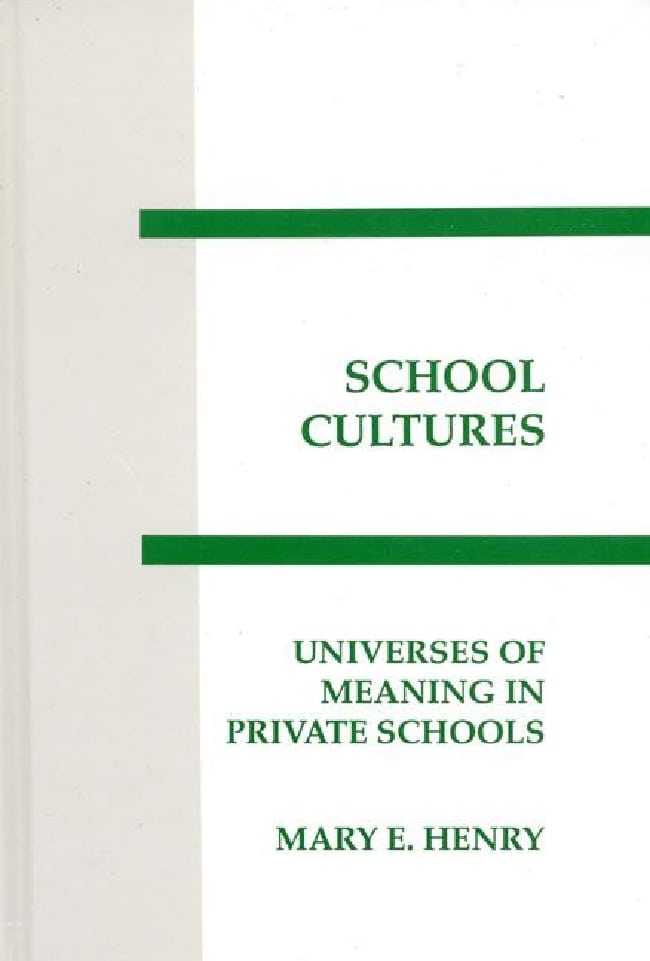
A Cultural Anthropology thesis comparing two schools, academic and Waldorf. Good research, uninspired academic style. Skip chapter two, “A Symbolist and Postmodern Theory of Culture.”
“Just how well Waldorf students “do” in comparison with other schools is unclear. Few statistics or even qualitative reports are available, because the testing notion is antithetical to Waldorf ideals, and research on Waldorf schools that is not merely promotional writing is rare.” (p. 80)

Hirsch supports his arguments with research results. At the end he has a glossary that deconstructs all the popular buzzwords of education. The buzzwords of Waldorf are found here. “Prospective teachers and members of the general public are bemused, bullied, and sometimes infected by seductive rhetorical flourishes like ‘child-centered schooling’ or bullying ones like the dismissive words ‘drill and kill.’ These terms and phrases pretend to more soundness, humaneness, substance, and scientific authority than they in fact possess.” New York: Doubleday, 1996.
Hoe vrij is de Vrije School?: een analyse van de antroposofische pedagogiek 🇳🇱
by Imelman, J.D., and P.B.H. van Hoek

The book Hoe vrij is de Vrije School?: een analyse van de antroposofische pedagogiek by J.D. Imelman and P.B.H. Van Hoek critically examines the educational philosophy behind Vrije (Waldorf) schools, which are based on the principles of anthroposophy developed by Rudolf Steiner. The authors explore how “free” these schools truly are, particularly in relation to the idea of freedom in pedagogy versus the structured influence of Steiner’s philosophical and spiritual ideas.
Their analysis discusses the degree of independence within the schools’ curriculum and teaching methods, raising questions about the balance between fostering individual student growth and adhering to the anthroposophical worldview that underpins the education. It’s a reflective critique on whether this form of education genuinely encourages freedom of thought or if it is constrained by its underlying spiritual framework.
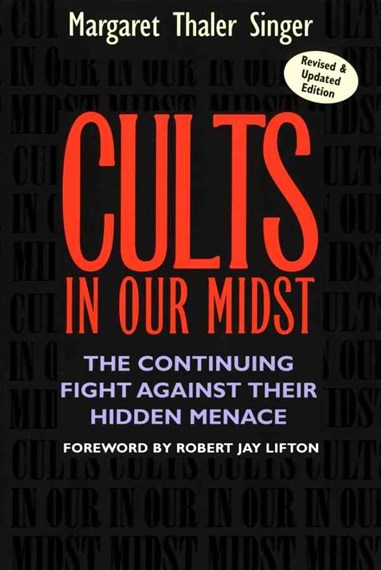
The country’s leading authority on cults, Margaret Thaler Singer, calls on her nearly fifty years of expertise to write the definitive book on cults. Written with author and former cult member Janja Lalich, Singer’s first book is a shocking exposé that reveals what cults are and how they work. Cults in Our Midst offers vital information on how to help people escape cult entrapments and recover from the experience. This compelling book debunks commonly held myths and answers perplexing questions about cults. San Francisco: Jossey-Bass, 1995.
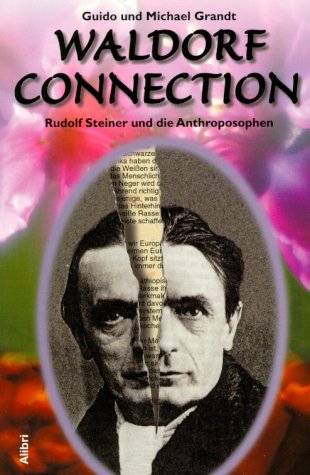
🇩🇪 Die Anthroposophie genießt weithin den Ruf, eine tolerante, hochgeistige Weltanschauung zu sein; die Waldorfpädagogik wird von vielen Eltern als Kreativität und Selbstwertgefühl fördernde Alternative zum Unterricht in einer Regelshule angesehen. Zu Unrecht meinen die Journalisten Guido und Michael Grandt. Die Autoren (deren Schwarzbuch Anthroposophie 1997 vom Markt geklagt wurde) vergleichen Anspruch und Wirklichkeit der Waldorf Connection anhand der Öffentlichkeitsarbeit der Anthroposophen, der Rezeption der Lehren Rudolf Steiners und anhand von Theorie und Praxis der Waldorfpädagogik. Sie dokumentieren die okkulten und rassistischen Anteile an der Weltanschauung Steiners und gehen der Frage nach, inwiefern diese noch heute in der Anthroposophie nachwirken. Sie setzen sich ausführlich mit dem pädagogischen Konzept und dem Unterricht der Waldorfshulen auseinander und erörtern den Einfluß der Anschauungen des »Meisters”
Anthroposophy is widely regarded as a tolerant and highly intellectual worldview, and many parents view Waldorf education as a creativity- and self-esteem-enhancing alternative to mainstream schooling. However, the journalists Guido and Michael Grandt disagree. The authors (whose Black Book of Anthroposophy was banned from the market in 1997) compare the claims of the Waldorf movement with the reality, focusing on the public relations of Anthroposophists, the reception of Rudolf Steiner’s teachings, and the theory and practice of Waldorf pedagogy. They document the occult and racist aspects of Steiner’s worldview and explore to what extent these elements still influence Anthroposophy today. The authors also delve into the educational concept and teaching methods of Waldorf schools, discussing the influence of the master’s (Steiner’s) views.
Anthroposophical Works
Selected works from the hundreds available from the cult of Rudolf Steiner. They can be useful to understand the thought process behind Anthroposophy and the Waldorf method.
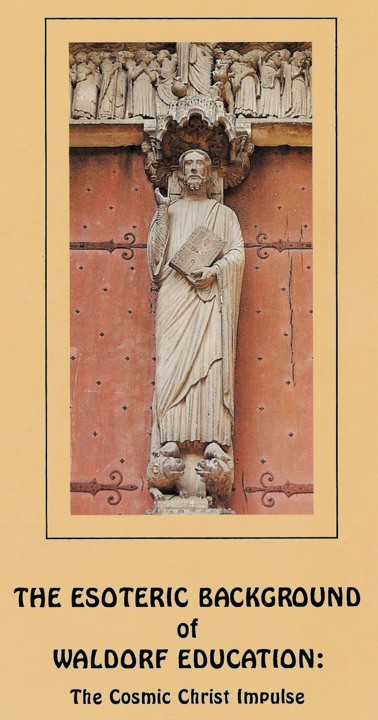
This book is based on the spiritual understanding of the cosmic Christ impulse and its relevance to our time. The author provides us with practical suggestions for the inner life of the teacher as well as insights into the structure of the curriculum. He addresses the questions of one’s relationship to the cosmic Christ, how to relate to our colleagues, and what the consequences are of these relationships for the students in our care. The author also invites the reader to a practice of the Foundation Stone Meditation.

This master’s thesis is dry and academic, but it gives the most comprehensive survey of Waldorf pedagogy available. The Anthroposophical doctrine behind almost every aspect of the system is given in detail. A must for serious scholars.
“[S]ince his death his thought has become isolated, and little mention is made of him outside publications by his followers. The fact that this is the first formal and comprehensive analysis of his educational thought reveals the neglect that has been shown towards him, despite the world-wide expansion of the Waldorf Schools Movement…The main reason for the isolation of Steiner’s thought appears to be its complex and unorthodox foundations, which this analysis has attempted to organise and clarify…”

A straightforward description of the system with thorough explanations of the Anthroposophical roots of Waldorf practices.
Waldorf Parenting Handbook: Useful Information on Child Development and Education from Anthroposophical Sources
by Lois Cusick

Waldorf-trained teachers actually handed this book out to charter school parents in California: Rudolf Steiner College/St. George Publications.
“There are four temperaments because, physically, the human body is made up of four forms of matter, and each begets its own soul-mood, or temperament. … Life is a force not visible unless one has acquired clairvoyance by spiritual training, in which case it can be seen as the aura.” (pp. 18-19)
AIDS the deadly seed: An anthropological and epidemiological investigtion of a modern epidemic and its significance
by Klaus Dumke

This little book gives a comprehensive introduction to Anthroposophical “Goethean Science,” from flawed epistemology through biological pseudoscience, and all the way down to the cosmic missions of the Jews and the Germans! Rudolf Steiner Press.
“[T]he world of the micro-organisms can be seen as a -counter world- to the formed world of the [four] realms of nature. The external, formless forces in which the micro-organisms are embedded have a dissolving effect on the mineral world (protozoa), a liberating effect on the large quantity of compounds fixed by the plant world (bacteria), and a toxic effect on the inner world of animals and human beings (viruses). This shows unicellular organisms, bacteria and viruses to be the invisible, material agents of supersensory effects whose origin requires investigation by the science of the spirit.” (p. 120)
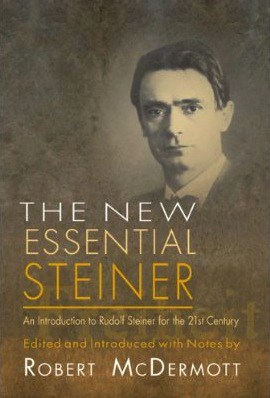
A good way to get a quick survey of Steiner’s work, with helpful peripherals including a chronology and extensive recommended reading lists but no index.
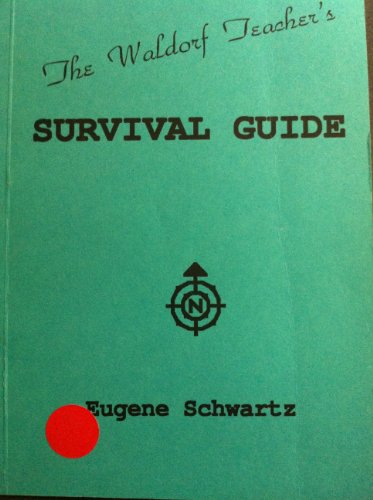
Thanks to the increasing acceptance of Anthroposophy, this formerly private-circulation booklet is now available to the public. Schwartz tells how to stage-manage parent evenings to get parents to act like children, and how Waldorf teachers work under the guardianship of Lucifer.
“In the modern path of self-development that Steiner traces, there are three stages of “knowing.” The first is Imagination, wherein we perceive a world of pictures that are lawful and meaningful. The second stage is Inspiration, in which we perceive the forces that lie behind the pictures, and that went into their creation. The third stage is Intuition. In this stage we encounter the beings who wielded the forces which created the pictures.” (p. 28)
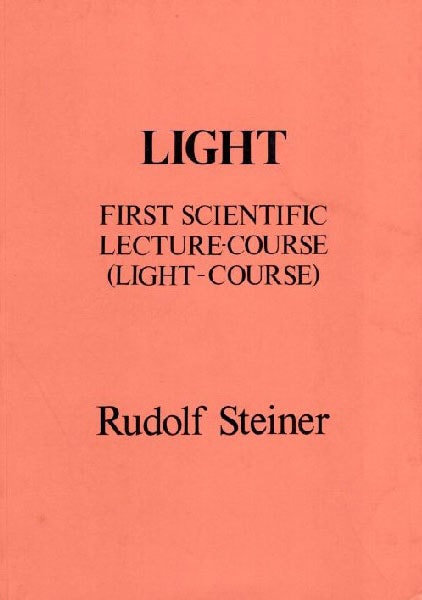
This booklet will dispel any notion that Steiner was either a scientist or a good teacher. Trans. George Adams.
“Yet as the faculty to apprehend the spiritual aspect of the World first had to be rekindled and awakened in our time — a slow and gradual process — it must have signified a very great sacrifice and a severe hindrance for this universal spirit to bring the spiritual truths from infinite horizons into the narrower range of outlook of his contemporaries. This sacrifice he did not shun. Even into the anxiously constraining walls of earth 20th-century scientific thinking he brought the light of spiritual knowledge, and we who have received this cannot find adequate words in which to thank him.” (from the foreword)

Wilkinson can be counted on to demonstrate how narrow the Steiner-dominated mind can be. A teacher training handbook.
However, higher powers are at hand. The huntsman is there as the wise power of destiny. The scissors are signs of his awakened consciousness.
“Red Riding Hood is saved. So is her grandmother who is refreshed by the bread and wine. It is an act of Holy Communion.” (p. 19)

